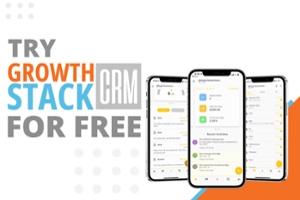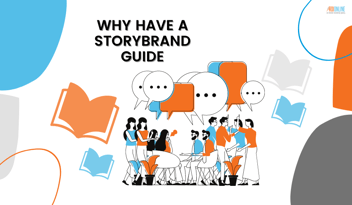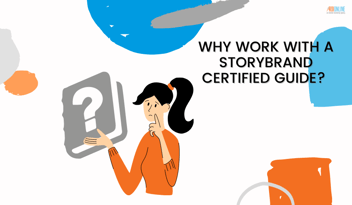How Your Story Can Grow Your Business
In a world where businesses are constantly shouting for attention, it can be hard to get your story heard. So what's the secret to sharing your story in a way that will attract customers? You can start by creating an emotional connection. And a few can do that better than a good story.
When you share your story in a way that resonates with people on an emotional level, they'll be more likely to connect with your brand and do business with you. So how can you make sure your story is engaging? It all starts with understanding your audience and knowing what matters to them.
A good story is at the heart of any successful marketing campaign. Good stories can be as simple as a customer who bought your product and was so impressed that he or she went back to buy more, or as complex as an entire plot involving several characters with intertwining storylines. A good story has only one goal: to engage people's attention.
The best storytellers know how to do this by making their audience care about what happens next. If you're looking for creative ways to grow your business, start by telling better stories about it!
Storytelling is one of the oldest, most powerful forms of communication in the world. It's a way to capture an audience and create a connection with them that can transform into something more. Stories have the ability to make an emotional impact, and they can be used to sell products, services, or even yourself.
As a business owner, you know that it's important to share your story with customers and clients. But how can you use storytelling to grow your business?
In This Blog Post...
We'll explore some tips for using storytelling to reach more people and achieve your goals. Stay tuned!
What Are The Elements of a Good Story?
What makes a story seem “real” and not just facts and figures? Storybrand founder Donald Miller says it all comes down to the " StoryBrand Framework ."
A good story has several different elements. Donald Miller, the founder of Storybrand, breaks them down into seven parts:
The Main Character
In your brand's story, the main character is your customer. We should always ask our clients who their customers are. We also ask them to be as specific as possible.
In the Storybrand Framework, the customer is not just any person who takes your product or service. The StoryBrand framework has a very specific definition of what a customer is: " Customers are people who are looking for a solution. "
A Story Is Not Just Facts and Figures
This is an easy mistake to make when you're telling your brand's story. When we think of our business, we probably think of all the facts and figures about it: how many employees we have, what our revenues are, how long we've been in business, etc. The Storybrand marketing approach asks you to look at your brand's story differently. Ask yourself if the facts and figures tell what has changed in your customer's life since they discovered you.
The Problem
In order to convince your customer that your brand is the solution they need, you have to show them that there is a problem. Storybrand says that your customer's problems are emotional. And the worse the problem, the better it is for you.
Your customers will be attracted to you for the same reason a protagonist is pulled into a story: they want to solve a problem. They want to remove some obstruction from their life.
The Three Levels of Problems
What most brands miss, however, is that there are three levels of problems a customer encounters. In stories, heroes encounter external, internal, and philosophical problems. Why? Because these are the same three levels of problems human beings face in their everyday lives.
Almost all companies try to sell solutions to external problems (the literal obstacle standing in their way), the goal for your brand is to dive into the internal (what their problem makes them feel) and philosophical (the reasons why it's unfair to have that problem) aspects of the problem as well.
The Guide Who Steps Into Their Lives
If a story had heroes that could solve their own problems, then they would not have any trouble.
Brands that try to be heroes end up competing with their customers. No matter how selfless someone might think they are, they still look at themselves as the main characters of their own story. Every day, we encounter the world from this viewpoint, and so do our customers. That is why they should be the center of our world.
Instead of treating yourself as the hero, consider your brand as the guide. You're Yoda in the story, and your customer is Luke Skywalker. Only this time, Luke pays Yoda some money so Yoda can keep the lights on in the office.
Who Gives Them a Plan
Making a purchase is a significant step, especially if our goods or services are pricey. Customers are seeking a clear path that eliminates any uncertainty about how to work with us.
In Donald Miller's book, Building a StoryBrand, he introduces two kinds of plans that will help your brand earn trust and create a clear path to stability for your customers. These plans are designed to help your customers through their purchase decisions.
Most successful brands give you a three-step plan. Why three? Because three sounds easy enough to follow.
Stop, drop and roll sounds like a great plan when you get caught on fire.
Sugar, spice, and everything nice sounds like an easy recipe to create perfect little girls (in a cartoon world).

A Call to Action
You'd be surprised how many businesses fail to provide clear calls to action for their consumers. A call to action is a statement that explains to the audience how they can overcome their problems and enjoy a peaceful life. People will not engage our brand if we provide no clear calls to action. It's a common mistake that many marketers fall into, but there is a solution.
If we want to attract more people than ever before and discover new brands, then we need to start using Clear Call To Actions. Clear calls to action are statements that allow our consumers to identify with their problems and invite them into the brand by transforming these problems into clear calls to action. Clear calls to action are designed with the audience in mind, not the company's internal goals. Clear calls to action invite consumers into our brand and help them enjoy their lives more than ever before.
The best CTAs manifest themselves in three-word buttons like:
- SCHEDULE A CALL
- SHOP THIS SALE
- GET A QUOTE
It's simple, easy to follow, and most importantly, it's clear.
Make Sure Your Story Helps Them Avoid Failure
Stories are only interesting if there are stakes involved. Even a nine-year-old who's struggling in math can suddenly be interested in the lesson once her iPad time is on the line.
If your hero doesn't risk anything in the story, he won't care about it. Will they? Won't they? Will he make it in time to the airport to catch up to the love of his life? Can Frodo throw the ring in the mouth of Mt. Doom to destroy the ring? These are the kinds of questions that put audiences at the edge of their seat.
In our brand, we must show our customers the cost of not doing business with us. We must help them avoid failure and let them know what failure must feel like. Define what's at stake and keep your customer's focus.
Make Sure to End Your Story in a Success
In the last part of your story, tell them how their lives look after they choose your brand. When you want your customers to follow your story, it has to have a satisfying ending. Or else they'll look for someone to give them that.
The most important element of your story is the vision of success. Create a connection between this and your brand and you'll have a happy ending.
How Can Brands Contact The Right Guide?
Join the next StoryBrand Workshop and learn how you can apply the elements of the greatest stories ever told into your brand's messaging. This interactive workshop is where we show up and do the work with StoryBrand Certified Guides. You'll get all the coaching you need, and in the end, you'll learn how to create powerful messages that will resonate with your ideal audience.
Click here for more valuable information!
If you're ready to level up this year, click on the button below to sign up for the next StoryBrand Workshop.








